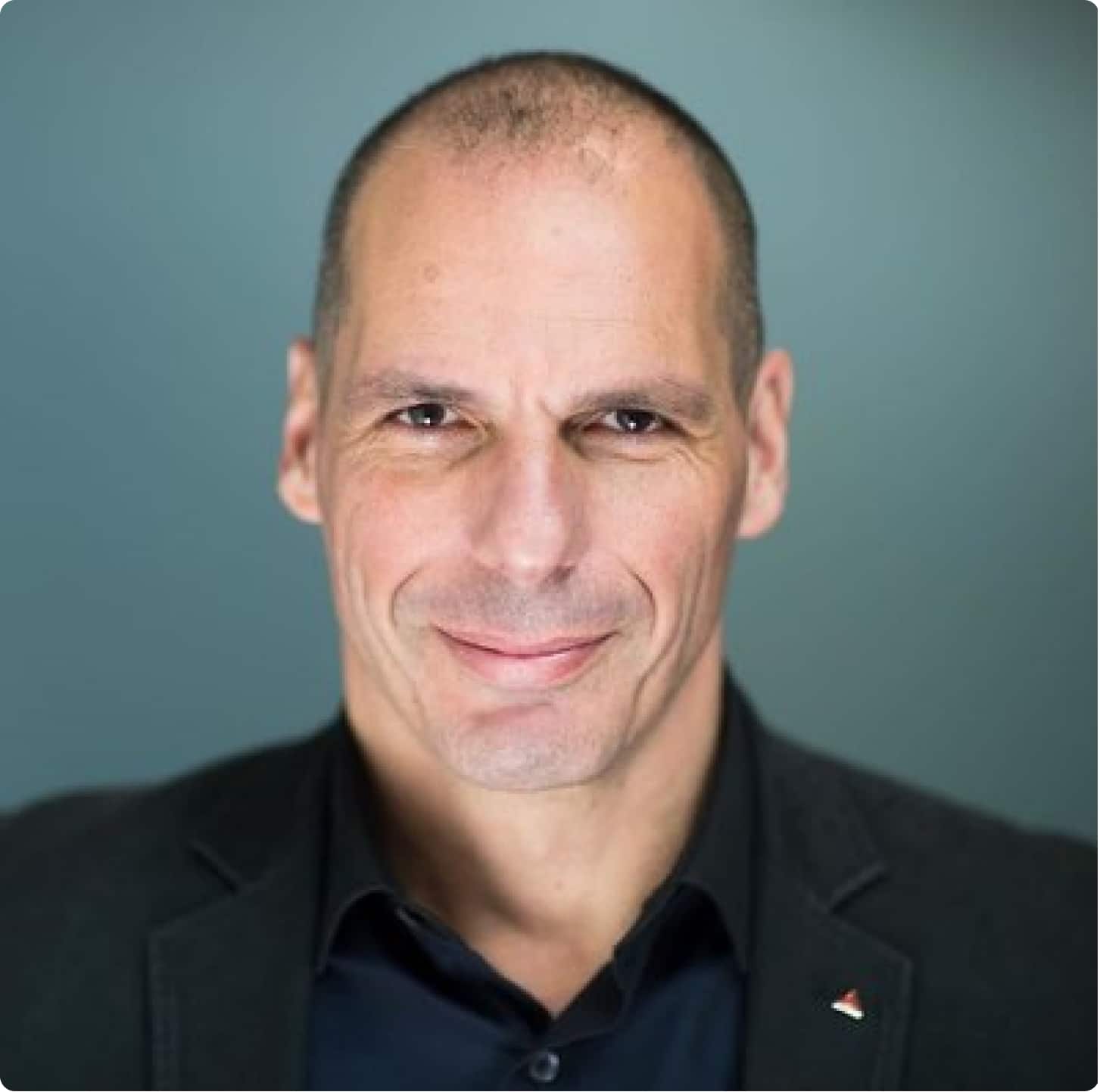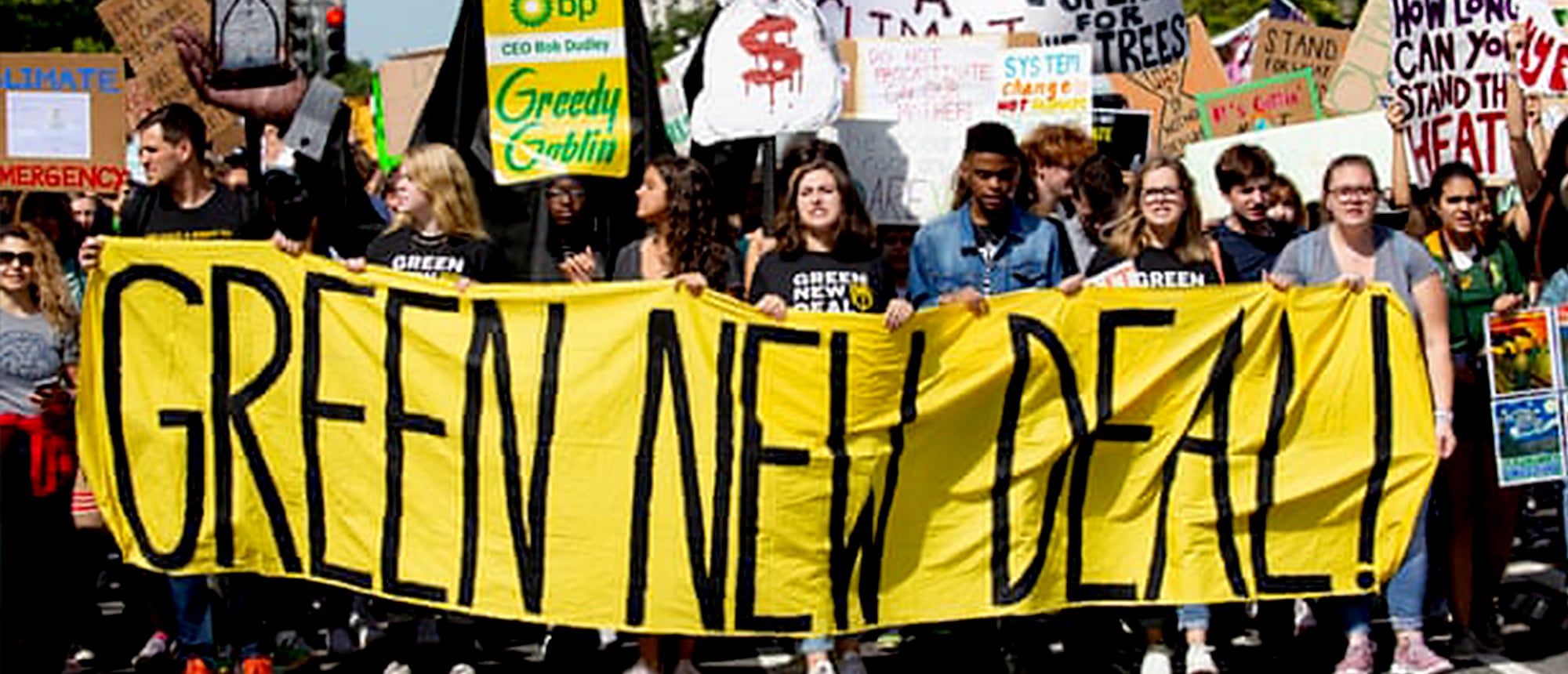A Recession Is Coming. When It Does, We Need To Demand A Green New Deal
American carnage and Brexit collapse, detention camps and environmental breakdown – the daily barrage of bad news makes it easy to forget that these are disparate symptoms of the same disease unleashed by the 2008 financial crisis.
Back then, activists in Europe and the US pushed for a holistic cure: a Green New Deal to deliver necessary investments in people and the planet. But establishment economists waved them off, preferring a shot-in-the-arm of easy money. Now, all the grave symptoms of recession have returned – and the old drugs don’t work any more, antibiotics to which the disease has already adapted.
But now is not the time for I-told-you-so. Never before has so much idle cash accumulated as in the past decade – and never before has circulating capital failed so miserably to invest in human health and habitat. We are long overdue for a Green New Deal.
Back in 2008, commentators were quick to announce the death of financialized capitalism. Alan Greenspan, former chairman of the Federal Reserve, was trotted out in front of Congress to apologise for his faith in self-regulating financial markets. Activists occupied town squares from Oakland to Madrid. And even the CEO of Goldman Sachs admitted he had a “reason to regret”. It seemed like radical change was around the corner.
It wasn’t. Far from collapsing, banks like Goldman Sachs turned around to record profits, hand out record bonuses, and rehash the risky practices that produced the Great Recession.
Mortgage debt – the proximate cause of the Wall Street collapse – is now at levels higher than in the pre-crisis period. The stock of BBB-rated bonds in Europe and the United States has quadrupled since 2008. Public debt has ballooned. And collateralised loan obligations, or CLOs, have surged to $3tn, “reminiscent of the steep rise in collateralized debt obligations that amplified the sub-prime crisis”, according to the Bank of International Settlements.
How did this happen? How did the financiers succeed in snatching such riches out of the jaws of their bankruptcy? How did the most severe economic downturn in a century result in a broad preservation of a broken status quo?
By a combination of carrots, sticks and tricks.
The first two ingredients are well known. The banks, of course, got their carrots. Governments in the US and the EU bailed out their bankrupt private lenders, shifting the mass of their debt on to the public balance sheets.
The public would then get the stick. Instead of punishing the irresponsible architects of the crash, our governments punished the pensioners, the poor and anyone who rose up to challenge the regressive cuts they imposed.
Less well known are the tricks deployed by governments and their central banks to stabilize the financial system and stave off the growing demand for fiscal stimulus.
Among many – swaps, exchanges, special vehicles purposes – quantitative easing was the most impressive, and the most poisonous.
To understand how it worked, recall that banks hate one thing more than bank robbers: assets on their books that they cannot lend with interest. After the 2008 collapse, with investment dead in the water, the central banks had pushed interest rates to near, or sometimes below, zero – hoping to kickstart investment. But this drove bankers up the wall, since they could not charge interest to lend their assets.
To help them along, the central banks bought trillions of these assets from the banks, using freshly minted cash. One knew that things got silly when the Bank of England bought IOUs issued by McDonald’s.
On the surface, the tricks worked. The influx of central bank money ended the recession, shrank unemployment, even revived the United States’ gargantuan trade deficit to its pre-2008 levels. Business-as-usual regained its dominance, and banks were declared safe again.
Under the surface, however, the crisis was deepening. The easy-lending environment created by quantitive easing and rate cuts – far from raising wages and sparking new startups – encouraged corporations to buy back their own shares, deliver more money to their wealthy shareholders, and load up on debts in the process. In 2018, buybacks soared to a record-high $806bn, a 55% increase from the year before. According to a recent study by the Bank of England, the overall effect of quantitive easing was to increase the wealth of the bottom 10% in the UK by roughly £3,000, and that of the top 10% by £350,000.
Meanwhile, investment in the real economy has plummeted. In the US, public investment dropped to 1.4% of GDP, its lowest level in 75 years. In the eurozone, net public investment has remained near zero for nearly a decade, with infrastructure investment in southern European countries over 30% lower than it was pre-crisis. And with the state on the sideline, the planet warmed, the environment collapsed, and species after species moved toward extinction.
Now, we are heading back into recession – but the old tricks don’t work any more. Rates have been cut, liquidity has been pumped, and the economy remains at a stall. Central banks are simply “pushing on a string”, as the former Fed governor Marriner Eccles once said.
If 2008 saw the original development of the Green New Deal proposal, then, 2019 is the time to deploy it: a moment when the architects of the old strategy, pockets empty, no longer seem able to defend it. “There was unanimity,” said Mario Draghi, retiring president of the ECB, “that fiscal policy should become the main instrument.”
But fool me twice, shame on me. Having squandered the last crisis, we cannot fall again for Draghi’s promise of a mild Keynesian stimulus in the face of human extinction. Instead, we must mobilize behind the Green New Deal as the only reasonable response to the coming recession.
It is tempting to think of the present moment as a crossroads: we either get our Green New Deal, or we descend into eco-fascism. But the fallout from the last recession suggests that – if we do not articulate a shared demand – we might just as easily get a slightly reconfigured version of the status quo: a little more green around the edges, sure, but with roughly the same distribution of power and resources. Such a plan is already under way in Europe, where the European commission now calls for a “green deal” with none of the transformative content of the Green New Deal agenda.
With the climate strikers marching on their front feet – and the old guard caught retreating on its heels – we have a clear opportunity to achieve a true systems change. But it will require us to make clear to our governments: it is a Green New Deal or bust.

